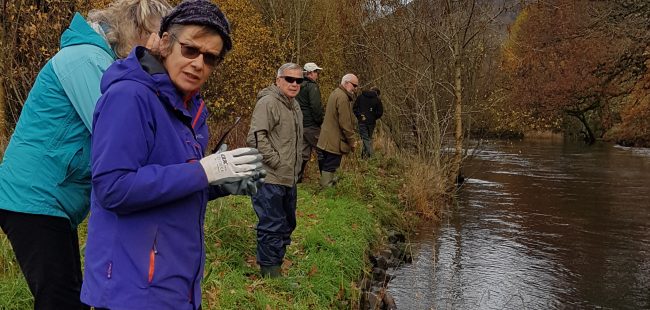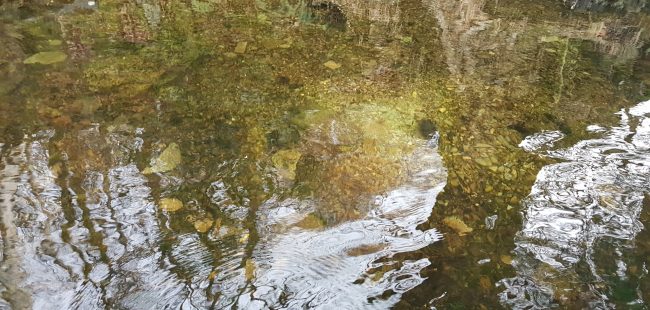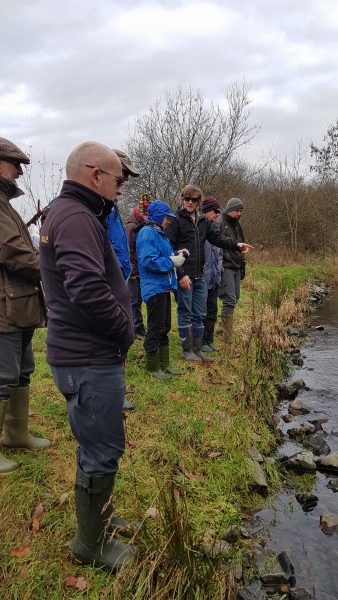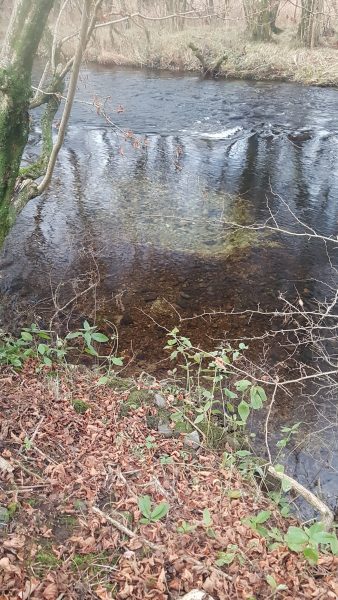Redds have been the focus for volunteer training and survey work this November.
Redd counting training will help volunteers identify redds in the River Crake and surrounding becks so we can map salmon and trout spawning sites. Redds are the scrapes in gravel made by salmon and trout in which their eggs are laid. The hatched fry also live in the gravels for a few weeks too. We have some past data but no recent formal records so volunteers will target areas where spawning has previously occurred so we can see if it still happening or not. Recording no redds in becks where we’d expect to see them is just as important so we can determine why; such as is there a barrier to migration or too much sediment.
Spotting redds is definitely harder than you think. The female (hen) flips on her side, flaps her tail and creates a small depression. As the fish create these they move and sort gravels on the bed of the river/beck so you then see a colour change. However, this could be a rock, some debris or just lacking in algae as opposed an area that has been disturbed. Wearing polarised sunglasses make a massive difference as it cuts out glare helping you see clearer into the water. The different fish species also create different sized redds. The general rule; saucer size is brown trout; dinner plate size is sea trout; dustbin lid is salmon. Redds can also overlap, some can be test scrapes but any sign of a redd is important.
Spawning can take place any time from November through to early January, the shorter days and cold temperatures triggering activity.
Mapping the redds will help us determine future conservation work such as fencing areas that suffer with too much sedimentation to reduce run-off and bank erosion. Gravel cleaning can also be targeted by our trained volunteers, removing the silt which will allow oxygen to filter through the gravels better before the spawning take place.
Two sessions took place along the River Crake (with landowner permission) and on the second morning we were really pleased to see a definite salmon redd! And for those who are wondering about the term redd – we believe it derives from the Norwegian for nest (plus the egg sacs the hatchlings at the alevin stage feed off are red coloured….)




